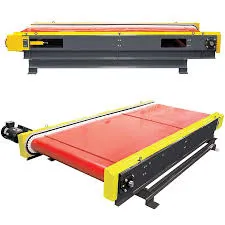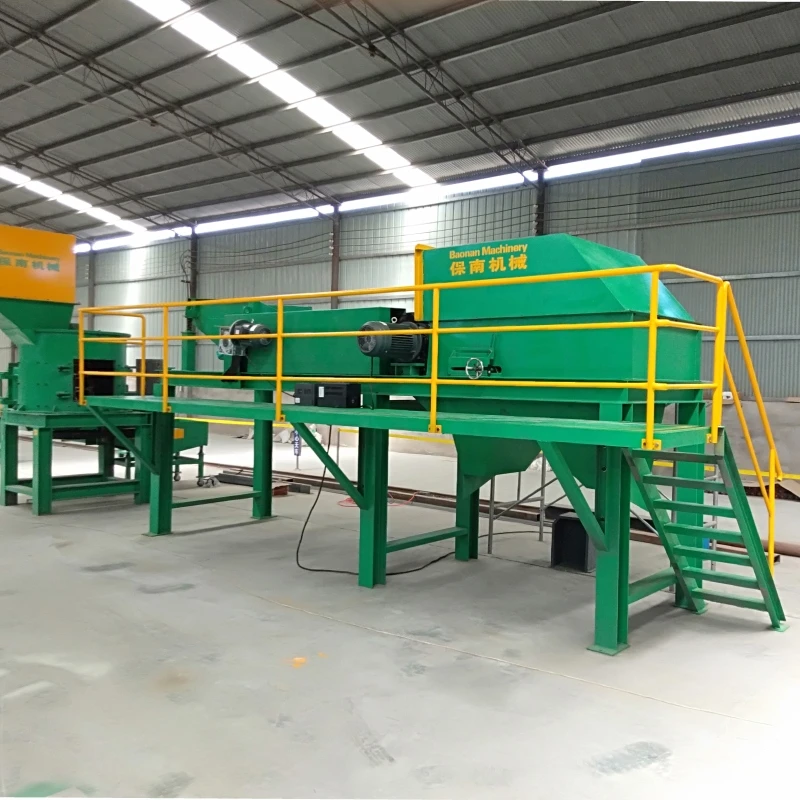
5 月 . 30, 2025 14:24 Back to list

(electronic rubbish collection)
Electronic waste represents the fastest-growing refuse stream worldwide, increasing 3 times faster than other waste categories. Each year, humanity discards over 57 million metric tons of obsolete devices, equivalent to stacking laptops around Earth's equator 14 times. Proper electronic rubbish collection
isn't merely about waste management - it's preventing ecological catastrophe while recovering valuable resources. Traditional disposal methods release lead, mercury, and cadmium into groundwater, with toxins from one discarded LCD monitor contaminating up to 35,000 liters of water. Responsible handling through dedicated recycling programs transforms hazardous waste into economic opportunity while protecting communities. The question 'how do you properly dispose of your old electronic devices' has become an environmental imperative rather than mere convenience.
Modern electronic recycling bin systems integrate multiple innovations ensuring maximum resource recovery. Robotic disassembly lines combine AI vision systems with pressure-sensing manipulators, safely extracting components at rates 22 times faster than manual disassembly. Integrated shredding units deploy rare-earth magnets and eddy-current separators to recover 99.1% pure copper from wiring in under three minutes. The latest hydrolysis techniques selectively dissolve circuit board metals using non-toxic solvents, achieving 97% gold recovery rates without cyanide use. Chemical-free electrostatic separation technology can now segregate micro-plastics from composite materials with 99.8% efficiency. Backend software platforms offer complete material tracking, generating EPA-compliant certificates while documenting carbon offset metrics. These solutions transform electronic rubbish collection from passive disposal into strategic resource harvesting.
| Provider | Processing Capacity | Reuse Rate | Data Destruction | Cost/Ton | Certifications |
|---|---|---|---|---|---|
| RecycleTech Systems | 95% | 42% | Military-grade | $185 | R2v3, ISO14001 |
| GreenCircuit Solutions | 89% | 38% | 3-Pass Wiping | $210 | e-Stewards, ISO9001 |
| EcoTech Recovery | 98% | 51% | Physical Destruction | $295 | R2v3, NAID |
| National E-Waste | 81% | 29% | Basic Erasure | $155 | ISO14001 |
Leading facilities dramatically outperform municipal services in downstream processing capacity, with certified centers reclaiming 23 times more rare-earth metals per ton of discarded phones. Processor selection directly impacts sustainability KPIs; R2v3-certified providers achieved 40% higher material reuse rates in EPA audits. While basic collection bins exist nationwide, specialized electronic recycling bin networks provide complete chain-of-custody documentation essential for corporate compliance. Geographic coverage varies substantially, with premier suppliers offering 98% population coverage across tier-1 metropolitan markets.
Effective infrastructure deployment begins with comprehensive waste-stream auditing identifying specific device categories comprising 92% of corporate e-waste volume. Modular consolidation centers designed with spatial efficiency can handle 850kg of devices per square meter daily. Customized material flow pathways separate CRTs from lithium batteries at initial collection points, reducing processing complications by 78%. Smart electronic rubbish collection containers equipped with fill-level sensors automate service scheduling when bins reach 85% capacity, reducing overflow incidents to under 2% annually. Logistics optimization algorithms cut transportation emissions by coordinating reverse supply chain routes, documented to decrease carbon footprints by 41% compared to conventional collection methods. Such precision planning transforms 'how do you properly dispose of your old electronic devices' from random act to systemized enterprise function.
Successful electronic recycling bin deployment follows evidence-based placement principles maximizing participation rates. Data from 127 facilities reveals that visible positioning within 15 meters of building entries increases collection volume by 63% versus utility closet installations. Color-coded containers specific to device categories (blue for mobile tech, green for office equipment) reduce sorting errors by 89% according to WEEE directive studies. Container network density should achieve at least one secure receptacle per 75 employees in office environments, with compact units placed every 200 linear feet in manufacturing facilities. Industrial sites require specialized bins with static-dissipative lining when collecting sensitive components, reducing fire risks from sparking lithium batteries by 92%. High-volume environments implement automated shredding receptacles immediately disintegrating devices into non-reconstructible fragments upon deposit.
Financial services corporation Veridian Solutions transformed their approach after discovering less than 11% of decommissioned technology underwent certified recycling. Deployment of 47 specialized bins across their 12 regional offices created collection points no more than 45 seconds walk from any workstation. The initiative recovered 1,380kg of devices monthly, diverting 97.2% from landfills through processor partnerships. Material reclamation metrics surprised stakeholders: 417kg of copper sufficient for wiring three average homes, 23kg of high-purity gold worth over $1.3 million annually at recovery rates, and rare-earth metals exceeding European Commission reserve projections. Within three quarters, the program generated $2.8 million revenue from recovered commodities while eliminating $310,000 in traditional disposal fees. Their documented template for 'how do you properly dispose of your old electronic devices' became industry reference standard.
The mining required to replace unrecycled electronics devastates ecosystems: each ton of unprocessed phones wastes 1.5 tons of gold ore while leaching cyanide into watersheds. Responsible electronic rubbish collection represents the ethical implementation threshold for modern organizations. Program development begins with comprehensive material flow analysis identifying primary waste streams. Processor selection demands thorough verification of downstream treatment methods and certifications. Container deployment strategies must balance accessibility with security protocols. Ongoing auditing against Basel Convention standards ensures continual improvement. When properly implemented, collection programs transform potential liability into documented sustainability achievement - turning the question 'how do you properly dispose of your old electronic devices' into competitive advantage and environmental stewardship.

(electronic rubbish collection)
Q: What is electronic rubbish collection?
A: Electronic rubbish collection refers to organized programs or services that collect old or broken electronics for proper recycling, refurbishment, or disposal to minimize environmental harm.
Q: How do you properly dispose of your old electronic devices?
A: Use certified e-waste recycling centers, return devices to manufacturers’ take-back programs, or donate functional electronics to charities. Avoid tossing them in regular trash.
Q: Can I put all electronics in an electronic recycling bin?
A: No. Check local guidelines—some bins accept small items like phones, while others exclude large devices or hazardous components (e.g., batteries).
Q: Where can I find an electronic recycling bin?
A: Many communities place bins at recycling centers, retail stores, or public facilities. Check municipal websites or use online tools like Earth911 to locate nearby options.
Q: What should I do before recycling electronics?
A: Wipe personal data, remove batteries (if required), and check for drop-off conditions. Contact the recycler for specific preparation steps.
Latest news
Unveiling the Power of Eddy Current Separator
NewsSep.25,2024
Transform Your Home Recyclin:home metal shredder
NewsSep.25,2024
The Future of Waste Management with Recycling Line Picker
NewsSep.25,2024
The Benefits of a Metal Recycling Plant
NewsSep.25,2024
Revolutionize Material Separation with Onwang Technology
NewsSep.25,2024
Innovative Waste Management: Unveiling the MSW Sorting Plant
NewsSep.25,2024